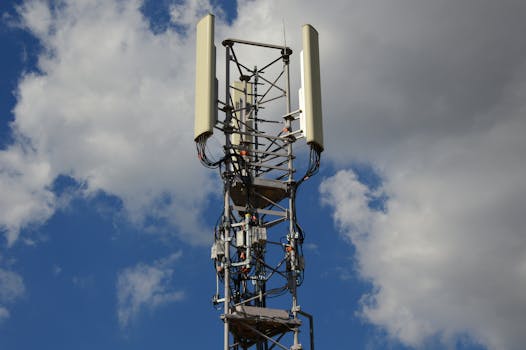5G Technology Advancements and Impact on Mobile Networks

Introduction to 5G Technology Advancements and Impact on Mobile Networks
5G technology advancements have been at the forefront of wireless communication, transforming the way we interact with mobile networks. The fifth generation of wireless technology promises to deliver faster data rates, lower latency, and greater connectivity, paving the way for a plethora of innovative applications and services. At the heart of this revolution is the 5G technology, which has been making waves in the mobile network landscape. In this article, we will explore the recent 5G technology advancements and their impact on mobile networks, highlighting the key benefits, challenges, and future prospects.
Recent Advancements in 5G Technology
Recent years have witnessed significant 5G technology advancements, with the deployment of 5G networks gaining momentum worldwide. The introduction of 5G New Radio (5G NR) has enabled the use of millimeter wave (mmWave) spectrum, offering faster data rates and lower latency. Furthermore, the development of edge computing and network slicing has enabled the creation of customized networks with specific performance characteristics, catering to diverse use cases such as enhanced mobile broadband, massive machine-type communications, and ultra-reliable low-latency communications.
The integration of artificial intelligence (AI) and machine learning (ML) in 5G networks has also been a significant 5G technology advancement, enabling the optimization of network performance, prediction of network congestion, and detection of security threats. Additionally, the use of beamforming and massive MIMO (Multiple-Input Multiple-Output) has improved the spectral efficiency of 5G networks, allowing for more concurrent connections and higher data rates.
Impact of 5G Technology on Mobile Networks
The impact of 5G technology on mobile networks has been profound, transforming the way we communicate, access information, and utilize mobile services. With 5G, users can enjoy faster data rates, lower latency, and greater connectivity, enabling the seamless streaming of high-definition videos, online gaming, and virtual reality experiences. The increased capacity of 5G networks has also enabled the support of a vast number of devices, making it an ideal platform for the Internet of Things (IoT) and machine-to-machine (M2M) communications.
The 5G technology has also opened up new avenues for mobile network operators, enabling them to offer a wide range of services such as enhanced mobile broadband, fixed wireless access, and mission-critical communications. The use of network slicing has also enabled the creation of customized networks for specific industries such as healthcare, finance, and transportation, providing a new revenue stream for mobile network operators.
Conclusion
In conclusion, the 5G technology advancements have revolutionized the mobile network landscape, offering unparalleled speeds, lower latency, and greater connectivity. As the deployment of 5G networks continues to gain momentum, we can expect to see a plethora of innovative applications and services emerge, transforming the way we interact with mobile networks. While there are challenges to be addressed, the benefits of 5G technology far outweigh the drawbacks, making it an exciting time for the wireless communication industry.



